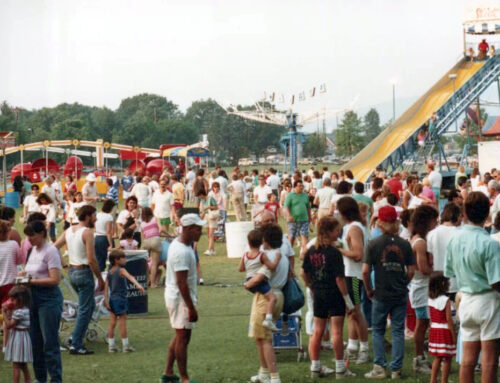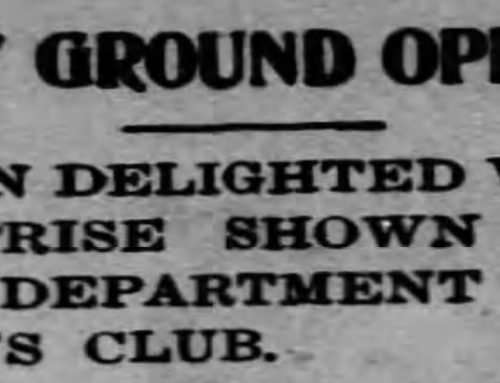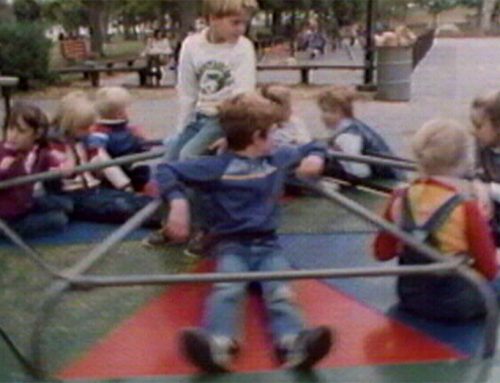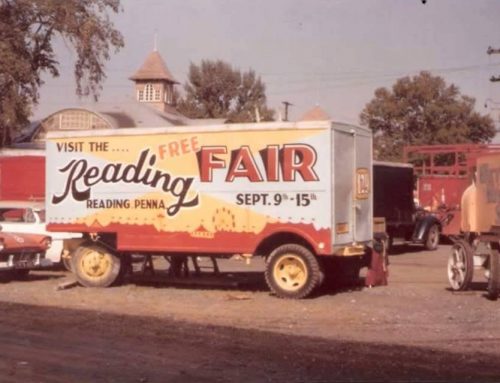On July 25th, 1907, Pendora Park, a commercial amusement park in East Reading formally opened to the public. People gathered from all sections of the city. The crowd was estimated at between 18,000 and 20,000. Every trolley car headed for East Reading was crowded to its utmost capacity, while thousands living in close proximity to the new pleasure resort walked there.
Below: The entrance, Pendora Park, Reading, PA.

Several thousand incandescent lights were distributed throughout the park and in front of the amusement buildings and other attractions in an effort to imitate the great White City of Chicago, an amusement park located at 63rd Street and South Avenue in Chicago.
All employees of Pendora Park dressed in white. The girls wore white skirts and sailor blouses, and the men wore white military suits.
A fence surrounded Pendora Park and admission was five cents, children free. The entrance was on 19th Street just north of Perkiomen Avenue, almost across the street from the terminal of the Gravity Railroad.
Pendora park comprised about 14 acres and was bounded by Eighteenth street and Mineral Spring road to the west; Forest street on the south; Nineteenth street on the east, and by Mineral Spring Park north of the Lindbergh Viaduct.
A lake, once Sweeney’s Ice Dam was converted into a lagoon. It was surrounded by a midway which was 2,250 feet in circumference.
The east end of the park took in the grove once known as Miller’s family park. Shade trees, benches and tables for picnicker’s, swings and other forms of amusement were scattered throughout the grove.
To the south of the lagoon a white city had grown. Amusement buildings, eight in all, were studded with thousands of incandescent lights. The water of the lake reflected the many lights. The main structure served as an amphitheater. Smaller buildings were occupied as ice cream parlors, penny arcades and other attractions.
Some of the attractions of the park included a toboggan, bandstand, miniature train, skating rink, and carousel.
The toboggan ride was called “shoot-the-chutes.” The starting point was up in the trees. The boats could not be seen until half-way down the chute. There were 10 boats, with seating capacities of 6, 8 and 10. The depth of the water was from two to four feet.
Below: “Shoot-the-Chutes” tobogann ride.

The roller skating pavilion was 90 by 250 feet in size.
Located at the west end of the skating rink was the carrousel, which included 36 galloping figures including horses and benzine buggy cars.
A miniature train circled the lake for a 2,250-foot ride. White Roman Pillars rising 12 feet and a heavy ornamental white fence separated the train tracks from pedestrians along the midway. On top of the pillars were large vases containing plants and vines.
In 1913 a zoo was established adjacent to Pendora Park. The zoo was comprised of at least two elk, two fallow deer, two black bears, two Canada geese, two horned owls, a silver pheasant, and a number of squirrels. The animals were donated by Col. Henry Wharton Shoemaker, a former publisher of the Reading Times.
Post cards of Pendora Park are just about the only reminders of the East Reading amusement resort.
In January of 1911, the park was virtually demolished by a fire that destroyed most buildings. The fire was thought to be arson, but no one was ever charged.
Then the lake was washed out by a storm and flood in 1917. In 1918, the place became city property and a playground.
In 1924, following a plea by the Humane Society, the zoo was abolished and the animals shipped to Williamsport.
In 1975, a proposal for the removal of Pendora Park for the construction of a school was rejected. A letter from the Reading Playground Federation stated the group’s opposition to the removal of the playground in the following statement: “By the removal of Pendora Park it would create many problems and the biggest one would be the children,” the letter maintained. “With no playground in that area the little tots will play on the streets.”










Leave A Comment